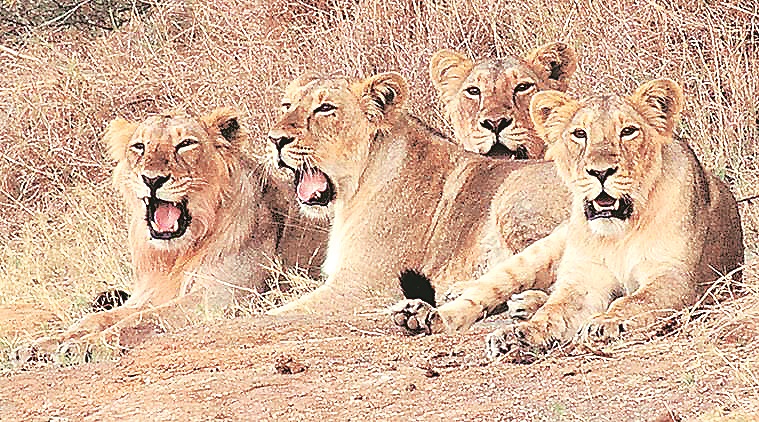X
Ravi Chellam, a wildlife biologist, said that keeping wild lions in captivity for long periods is risky. (File)After the multiple deaths, the forest department launched an extensive drive to screen each lion in Gir forest and other protected areas from September 23.
WHILE THERE has been no report of any lion death due to disease in the last 20 days, 36 Asiatic lions that were rescued after a spate of deaths in Dalkhaniya range last month are still under observation. Forest officers said they have not decided on any timeframe to release them back into the wild.Between September 12 and 29, 23 Asiatic lions died in Dalkhaniya range of Gir (east) forest division. All the big cats that died had settled in Sarasiya Vidi, a 25 sq km forest patch in Dalkhaniya range. While carcasses of seven lions were found in Sarasiya Vidi, four others that had been shifted to rescue centres died while undergoing treatment.
After the multiple deaths, the forest department launched an extensive drive to screen each lion in Gir forest and other protected areas from September 23. During the drive, which covered 3,000 sq km, a lioness in Sarasiya Vidi was found to be ill and died before she could be treated. Another lion cub that was shifted to a rescue centre also died.
The forest department rescued the remaining 13 lions from Sarasiya Vidi and shifted them to Jasadhar Rescue Centre in Gir (east) forest division. As a precautionary measure, the department caged 31 lions from Semardi area and two from neighbouring Paniya range. The lions from Semardi were shifted to Jamwala Rescue Centre in Gir (west) forest division and those from Paniya were transferred to Babarkot Rescue Centre in Amreli social forestry division. However, 10 of the 13 lions rescued from Sarasiya Vidi died by September 29.
The remaining 36 lions have been under observation at the three facilities for almost three weeks now. After the National Institute of Virology, Pune announced that samples of some of the dead lions had tested positive for the Canine Distemper Virus (CDV), veterinarians had given CDV vaccine to the lions under observation. The NIV later confirmed that samples of 21 out of 27 lions under observation had returned positive for the viral disease.
“They are all well,” Dushyant Vasavada, Chief Conservator of Forests (CCF) of Junagadh wildlife circle, told The Indian Express on Friday when asked about the 36 lions under observation.
The forest department has imported 300 doses of CDV vaccine from the US and placed an order for 500 more doses. However, the CCF said they had not decided whether to give the two booster doses and when to release the carnivores back into their territories. “The first booster dose can be given only 21 days after the initial dose. The second booster can be given three weeks after the first booster dose,” Vasavada said.
Ravi Chellam, a wildlife biologist, said that keeping wild lions in captivity for long periods is risky. “Since lions are territorial animals, they mark their territories on a daily basis by roaring and scent marking. If territories are not marked, other lions will recognise that the territory is vacant… Some other lions will take over the territory without any challenge… This will significantly reduce the chances of the captured lions surviving after being released.” he said.
He also advocated eliminating potential sources of disease rather than rescuing lions and treating them in captivity. “The problem is our approach to dealing with wild animals as if they are semi-captive, rescuing them at will. We shouldn’t treat wild animals in that way. What we should do is prevent poaching, lions falling into wells, being run over by trucks and trains,” Chellam said, adding that regular disease monitoring and ring-vaccination of domestic animals is important.
He advocated a credible, multi-disciplinary and independent investigation into the disease outbreak
https://indianexpress.com/article/india/gir-lion-deaths-36-lions-under-observation-time-for-release-not-decided-5410061/

No comments:
Post a Comment